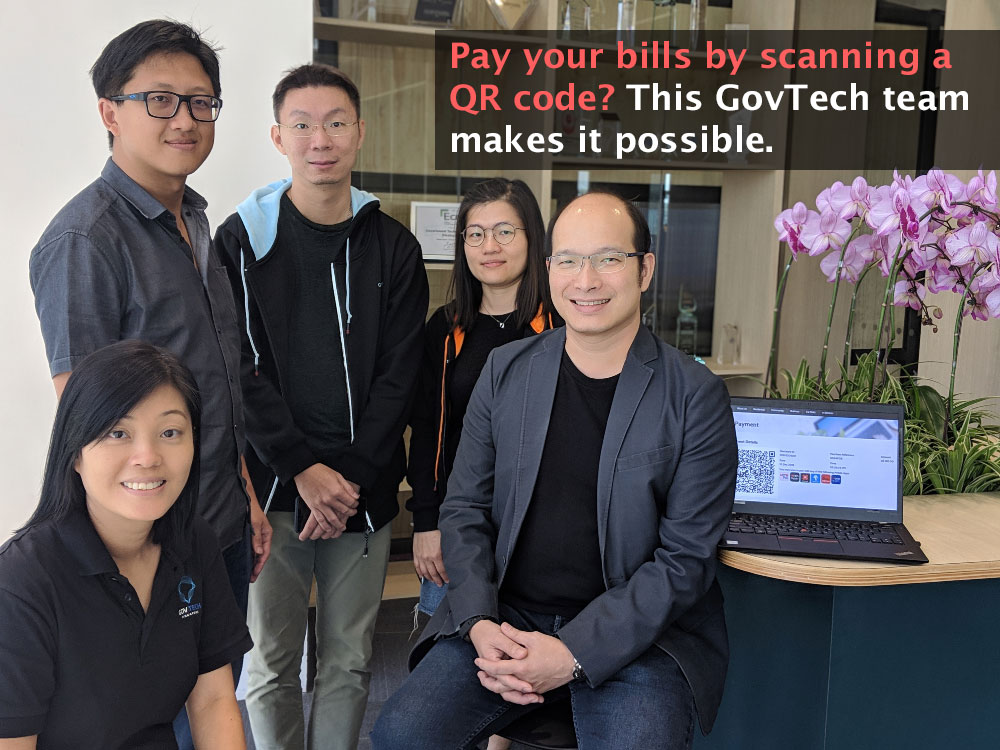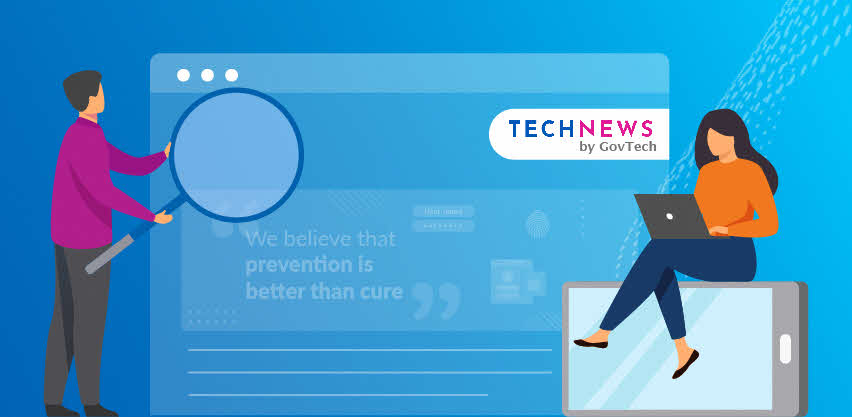Pay your bills by scanning a QR code? This GovTech team is making it possible
This article has been updated on 23 July 2024.

Left to Right: Rachel KM Lim, William Lee, Lua Hai Chen, Jennifer Lai and Kendrick Lee from the Government QR Payment team
A QR payment system for government transactions
The COVID-19 pandemic necessitated the need for contactless experiences. That in turn led to the surge of QR code adoption, even though these little black squares have been around since 1994. Today, 74 per cent of Singaporeans share that they use QR codes more often post pandemic. Also, 48 per cent of Singaporeans now use QR codes to make payments, enjoying great convenience when purchasing their favourite Old Chang Kee curry puff or checking out their groceries.

Inspired to replicate this experience for government-related transactions, GovTech introduced Government QR Payment (Gov QR Payment). Secure yet seamless, it allows citizens to simply scan the QR codes on their bills, both physical and electronic, to make payments. This effort marks a step towards achieving the Digital Government Blueprint’s goal of delivering end-to-end digital services for citizens that make transactions more convenient and digital payments easier to use.
Let's take a look at its development and use cases!
1. Getting the Process Started
Gov QR Payment is based on the Singapore QR (SGQR) code standard developed by the Monetary Authority of Singapore, which defines QR code details such as the default positions for Singapore-relevant fields, as well as the ordering of account information from payment schemes.
However, instead of creating a separate mobile app for the Gov QR Payment, the team at GovTech decided to integrate their solution with the banks’ e-payments apps with QR scanning features. This involved working closely with financial institutions including DBS Bank, OCBC Bank, United Overseas Bank and electronic payment service provider NETS.
“For example, we had to carry out user acceptance testing and pre-live testing of the Gov QR Payment system with the financial institutions,” said the Gov QR Payment team. “Sometimes, we discover a bug in the bank’s app which even the bank’s developers may not be aware of, and they will fix it to ensure that there is no hiccup when rolling out the Gov QR Payment function within their app.”
2. Pilot Testing with HDB
Once the technical framework had been put in place, the Gov QR Payment team carried out a pilot test on the Housing Development Board (HDB) Resale Portal and Sales e-Application in August 2018.
Resale flat buyers and sellers could pay for resale application administrative fees, conveyance fees and title search fees using the Gov QR Payment system, thereby eliminating the need for buyers and sellers to make payment personally at HDB if they do not have a credit card. For those applying to buy apartments from HDB, the S$10 administrative fee can be paid via QR payment as well. To date, more than 10,000 individuals have used the Gov QR Payment system to transact with the Government.
3. Where we are today
Given the early success of HDB, other government agencies such as the Central Provident Fund (CPF), the Singapore Land Authority (SLA) and the Land Transport Authority (LTA) have since deployed Gov QR Payment as an e-payment mode. “The Gov QR Payment option is in line with the Singapore government’s Digital Government Blueprint, and is a step towards delivering end-to-end digital services for citizens by 2023,” said the Gov QR Payment team.
While Gov QR Payment is designed to be safe and secure, you should always be vigilant when using digital services. Make sure the QR codes you're about to scan are from credible and trusted sources, so that you don't fall prey to scams and malicious activities.




